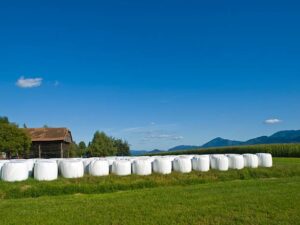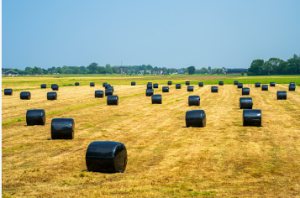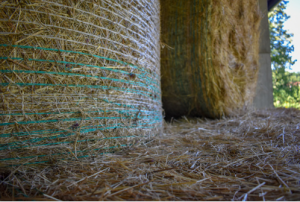As the sun rises over rows of vibrant green crops and animals grazing in the fields, a farmer’s day begins. It is a life filled with hard work, dedication, and a deep appreciation for the land. But behind this idyllic scene lies one essential tool that often goes unnoticed – baling twine. Learn the ropes, quite literally, by understanding how to tie baling twine effectively, as this skill is a fundamental aspect of utilising this versatile material on the farm.
 This unassuming item may seem insignificant to many, but for farmers across the world, it is their most valuable companion. From holding together hay bales to fixing equipment in a pinch, baling twine has become an integral part of a farmer’s daily routine. Let’s delve into the fascinating world of baling twine and discover why it truly deserves to be called “a farmer’s best friend.”
This unassuming item may seem insignificant to many, but for farmers across the world, it is their most valuable companion. From holding together hay bales to fixing equipment in a pinch, baling twine has become an integral part of a farmer’s daily routine. Let’s delve into the fascinating world of baling twine and discover why it truly deserves to be called “a farmer’s best friend.”
Baling twine may seem like a small, unassuming tool, but it plays a huge role in the life of a farmer. This strong and durable twine is essential for securing hay bales and ensuring that they stay together during transportation and storage. Without it, the bales would fall apart, leading to a major loss of resources and productivity. Baling twine is a staple in any farmer’s toolkit, and it has been used for generations to make the job easier and more efficient. So, whether you’re an experienced farmer or just starting out, make sure to keep a supply of baling twine on hand – it’s a tool you won’t want to be without.
Baling twine is an essential tool in any farming operation thanks to its incredible versatility. This simple but durable material can be used for everything from securing hay bales to mending fences, making it an indispensable part of any farmer’s toolkit. With the ability to be tied, twisted, and coiled to meet any need, baling twine can create strong, reliable connections that will stand up to even the most rugged conditions. Whether you’re repairing a damaged fence or bundling up a load of hay, baling twine is the perfect solution for any situation.
As farmers, we all know the true value of baling twine. It’s what keeps our bales together and our farms organised. However, it’s important to store and use it properly in order to prolong its lifespan. One tip is to keep your baling twine in a dry place, away from moisture and sunlight, which can cause it to weaken over time. Another helpful tip is to avoid knotting as much as possible, as this can cause the twine to tangle and break. Instead, try learning different ways on how to tie baling twine, such as the slip knot or the quick-release knot, which not only keep your bales secure but also help preserve your twine.
Baling twine is a cost-effective and durable option for farmers and ranchers looking to secure their hay bales without breaking the bank. Unlike other materials that can be pricey or wear out quickly, baling twine offers a reliable and long-lasting solution that won’t put a dent in your wallet. Plus, it’s easy to work with and can be used for various applications beyond hay bales.
Farmers frequently consider baling twine a necessary item, yet the old string is often regarded as useless waste when it needs to be replaced. However, with some creativity, baling twine can be transformed into valuable things. The possibilities are endless, from DIY projects like braided dog leashes and woven baskets to practical uses like tying up garden plants or holding fence posts in place. Plus, repurposing old baling twine is not only environmentally-friendly but also a fun way to get creative and bring new life to an old material.
If you’re passionate about supporting local farmers, then utilising and promoting baling twine is a simple yet effective way. Not only does it provide a practical solution for binding crops, but it’s also an eco-friendly alternative to plastic ties. And don’t worry if you’re unfamiliar with how to tie baling twine – a quick search online will reveal countless tutorials and step-by-step guides. So why not consciously prioritise local farmers and the environment by incorporating baling twine into your everyday life? Spread the word and encourage others to do the same; we can make a difference together.

 You want an efficient and effective product when looking for a silage cover. The Sila-Cover 300 is the ideal solution for this. For quality silage covers, check out
You want an efficient and effective product when looking for a silage cover. The Sila-Cover 300 is the ideal solution for this. For quality silage covers, check out  An individual wrapper is a good option for small to medium-sized operations. It is relatively easy to move around and has a longer lifespan. However, it isn’t as efficient compared to inline or platform wrappers. For example, an inline wrapper can wrap 60 bales per hour, while an individual one is capable of a lesser number.
An individual wrapper is a good option for small to medium-sized operations. It is relatively easy to move around and has a longer lifespan. However, it isn’t as efficient compared to inline or platform wrappers. For example, an inline wrapper can wrap 60 bales per hour, while an individual one is capable of a lesser number.